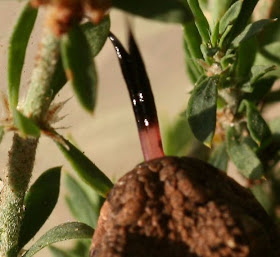Family Achatinidae
This is an East African species which has an extensive range and found in coastal regions as well as forests and urban gardens.The live under leaf litter and the female lays clutches of up to 120 eggs.
In some regions they can become a pest and are reported to cause damage in citrus orchards.
 |


















































